Varieties of Northern Highbush Blueberry
(Vaccinium corymbosum)

Early:
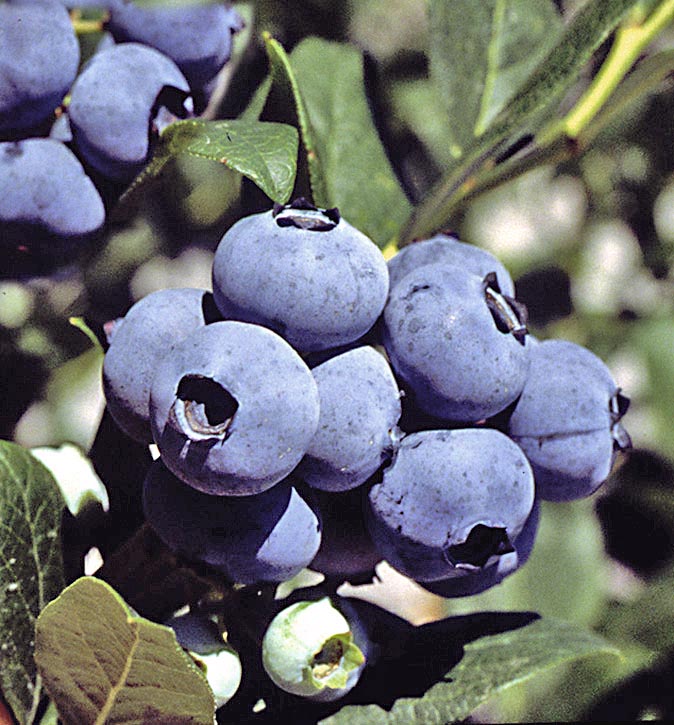
Chanticleer –
the earliest variety of Northern Highbush Blueberry. Equivalent of Sunrise variety. The plant is straight up, with slight side outgrowths. The bush can grow up to 180 cm and is resilient to frost as low as -28 degrees Celsius, and to most fungi diseases. Fructification is heavy and lasts till mid June. The berries are not a lot smaller than the ones of “Duke” variety, sweet and aromatic, resilient to transport. Perfect for the fresh fruit market and in desserts.
.
 Earliblue –
Earliblue –
developed in 1936 and cultivated since 1952. Perfect for deserts and food processing. The plant grows quickly, sprouts are going up, later nicely spread. Resilientto frost. The fruit is medium size, mature harmoniouslyin the late June, early July. Round, a little oblate at the stem, intensely waxy. Flesh is tight, greenish, pinky at the skin, aromatic with sweet-dry taste.
 Hannah’s Choice –
Hannah’s Choice –
early variety, maturing in the same period as the “Duke” variety. The bush silhouette is upward, height up to 1,5m. Resilient to frost down to -37 degrees Celsius. The fruits are firm, light blue and sweet, large, collected into loose bunches. Perfect for storage. Can be harvested mechanically. Fruit perfect to eat raw.
.
Duke –
is one of the most popular blueberry variety in Poland. Since it flowers a bit later, it avoids frosting. The fructification isabundant, in the warmer parts of our country lasts even until the end of June. The variety does not need fertilizers. “Duke” can endure frosts down to -25 degrees Celsius. The bush is round, loose. The sprouts are stiff, when heavy with fruit can form curves. The fruits are oblate, collected into looses bunches ofsimilar size. The taste is sweet-sour. Great for eating raw and baked goods.
Mid-early varieties:
 Spartan –
Spartan –
a variety described as mid-early. In cultivation since 1977. Bush of quite loose, round and not branched out silhouette, with stems that are of medium thickness and not really branching out. Quite resilient to frost. Fruits are quite large, oblate , blue, waxy, gathered in loose bunches. Very tasty, sweet-sour variety. To be consumed raw or processed.
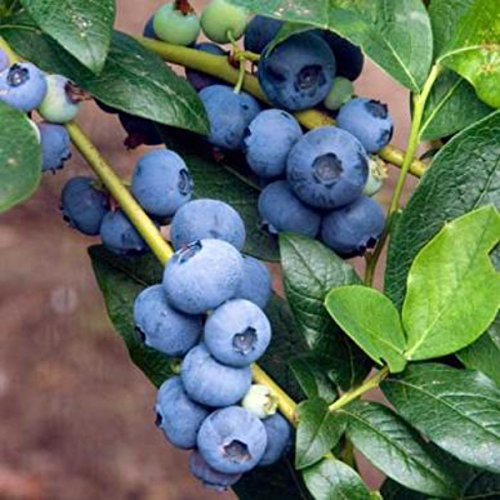 Patriot –
Patriot –
mid-early variety of limited fructification. Recommended for amateur planters, less often for market cultivation. The variety does not need much care, resilient to frost and diseases. Cultivated since 1976. Grows reasonably fast, the silhouette is loose, round and oblate, quite dense. The fruit is firm and aromatic. In the first harvest, the fruit is very large. Waxy. Coloration typical for this variety – the end at stems are green. Great to have raw or in baked goods.
Mid-season varieties:
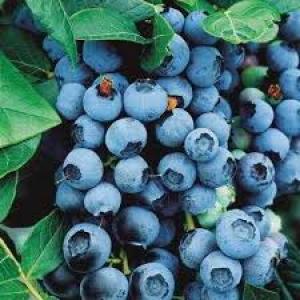 Bluejay –
Bluejay –
old variety maturing mid-season. The silhouette is strong, upraised with tendencies to spread out. Fructification harmonious, at times simultaneous. The fruit is medium sized with tendency to be little, slightly elongated, gathered in loose bunches. Very tasty, sweet and sour. Perfect for mechanical harvest. Recommended in desserts.
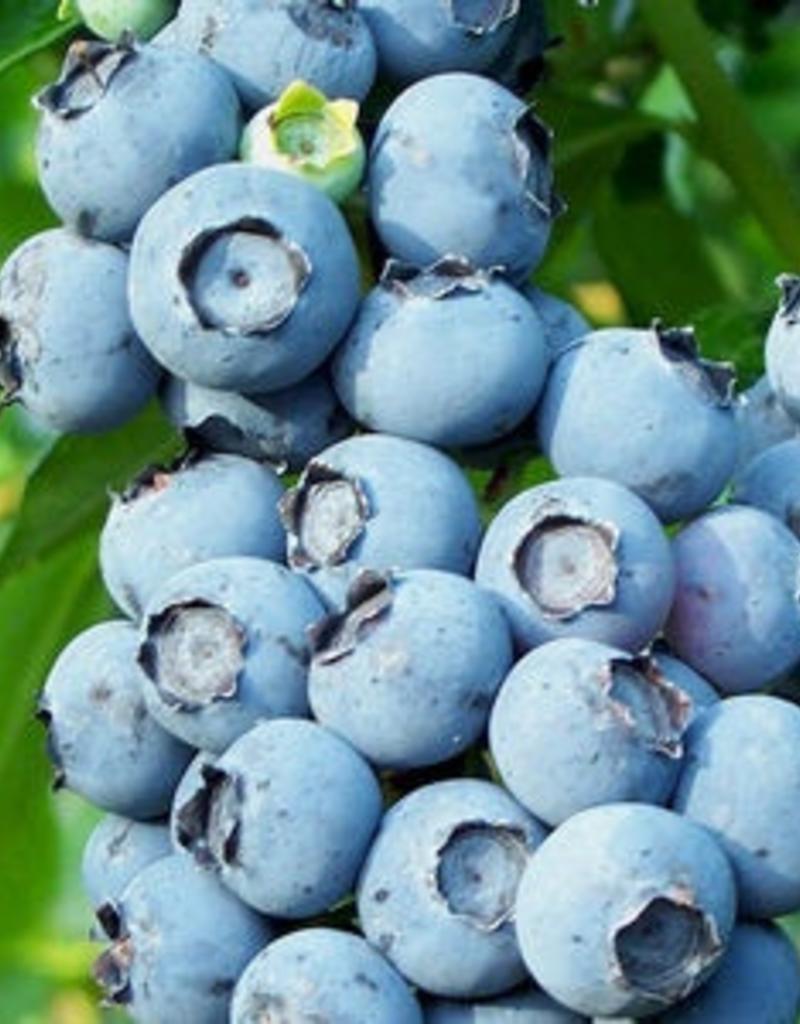 Toro –
Toro –
competition to the “Bluecrop” variety. Very heavy fructifications. In cultivation since 1987. Young bushes have branched out silhouettes, older are more tight. Fruit is round, big with a slight waxy cover, sweet and sour. Mature in the third quarter of July and in harvest for a short time. The fruit is perfect both for raw consumption and in baked goods.
 Draper –
Draper –
licensed variety. Developed from ”Duke”. Quite young, in cultivation since 2004. Self-fertilizing,but cross-fertilization improves both quantity and quality of the harvest. Matures several days after the “Duke”, but several days before the “Bluecrop”. Resilient to frost down to -29 degrees Celsius. Vulnerable to moniliosis.The fruit is blue, with intense waxy cover, as compared to “Bluecrop” sweeter, more firm and better for storage. To consume raw or in desserts.
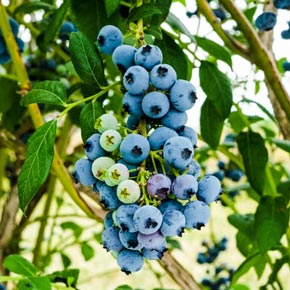 Bluecrop –
Bluecrop –
the most popular variety both in Poland and around the world. Strong growing with straight stems with tendency to bend – often there is a must to tie up the branches. The variety is mature late July early August. Perfect both for commercial and amateur cultivation. Resilient to frost and diseases. The fruit is big round, slightly oblate, sweet tasting. Covered with waxy blue mist. Thick skin allows the fruit to be stored and transported successfully.
 Bonus –
Bonus –
mid- late variety gives fruit up to mid August. Sprouts are loose, grow up to 150 cm. Resilient to frost down to -34 degrees Celsius. Very heavy fructifications. Large fruit, comparable to the “Chandler”. Round, sweet, firm, light blue. Perfect as desserts, for processing, freezing. Resilient in transport.
 Chandler –
Chandler –
very popular variety, because of its large fruit. In cultivation since 1995. The bush is spread out and grows up to 150 cm. Resilient to frost. The best fertilizers are the varieties “Bluecrop” and “Bluegold”. Gives fruit from July till September. The diameter of mature fruit s 2,5-3 cm. Lightly oblate, with light waxy cover, firm and tasty. Not so good in long distance transport since they are vulnerable . Great raw in desserts and for processing.
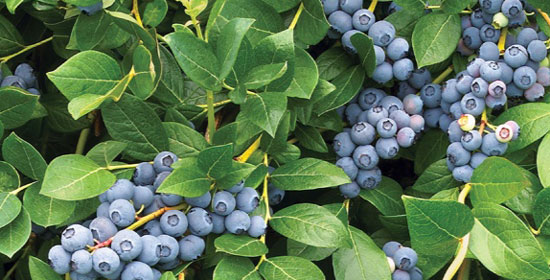 Bluegold –
Bluegold –
ariety developed in 1976. Grows slowly, the silhouette is medium tight and round. Very fertile variety, developed from the “Bluecrop” variety. Fruit is mature around mid August. The fruit is large, waxy, round, a bit oblate at the stem.The flesh is not that firm , greenish, a bit sour and not that aromatic. Great for commercial plantations, fruit can be eaten raw or in desserts.
 Nelson –
Nelson –
developed in 1960. Bush grows strong, loose and backwards oval in silhouette. Harvest begins late August. The fruit is large, round, similar in size gathered in quite firm bunches, slightly oblate. Light blue, waxy. The flesh is greenish, firm, sour and sweet and aromatic. Great for both amateur and marketing cultivation.
Late
 Darrow –
Darrow –
strongly growing variety, with upward, a bit spreading out sprouts. Grows up to 130-180 cm. Known as a medium fertile variety (up to 5 kilograms from one bush). Resilient to frost down to -28 degrees Celsius. Harvest in August till early September. Large fruit is gathered into loose bunches. Light blue, sweet and sour, not really very aromatic, best fully matured. Very obvious calicle partitions and a sign left by the carpel. Good for transport, since it doesn’t break. Perfect to eat raw and for processing.

Liberty –
a cross between “Brigitta Blue” and “Elliot” varieties, patented in 2004, licensed. Grows up to 150 cm, resilient to frost down to -37 degrees Celsius, self fertilizing, ,but cross-fertilization improves both quantity and quality of the fruit. Mature to harvest in August. The berries have diameter up to 2 cm, they are purple blue, firm, with dry mark after the stem. Dessert fruit, ideal for freezing, longevity in storing and good in transport. The variety is suitable to transport.
Lateblue –
Developed in 1950. Grows strongly, silhouette is round and thick. Fruit is ready for harvest in late August. The fruit is medium sized, a bit oblate, round, growing in tight, short bunches.Blue, very waxy. The flesh is firm, greenish, sweet and not so aromatic. The fruit is great raw and processed. This variety is advised to be cultivated in warmer parts of our country or undercover
.
 Elliott –
Elliott –
late variety with heavy fructifications. Specific, grows up to 200 cm and needs characteristic pruningto achieve desired size and quality of the fruit. Resilient to frost down to -20 degrees Celsius. Harvest between Septemberand October. The fruit is medium size, light blue and intensely waxy. Gathered into loose bunches set on long stems. Aromatic and very tasty. Great for eating raw and for processing. The variety is perfect for mechanical harvest. Lasts long in storage.

